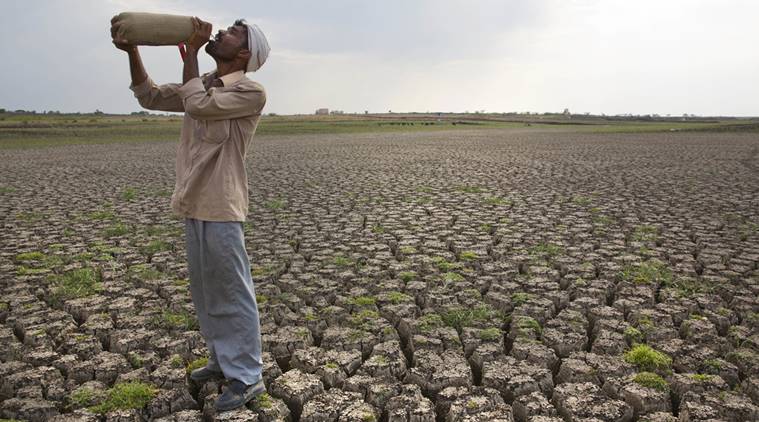Farm Distress in India: An Agrarian Crisis of Growing Severity

In 2018, India is projected to surpass both France and the UK to become the world’s fifth largest economy; however, in spite of this triumph, the nation remains plagued by a worsening agricultural crisis. With 47% of the Indian labor force working in agriculture, distress caused by increasing price volatility, indebtedness and climate risk affects a significant segment of India’s population. In fact, the BJP’s failure to gain the rural vote in certain regions of India, such as Saurashtra, can be attributed in part to the increasing hardship faced by the country’s farmers. At present, farming in India is a relatively unstable occupation: farm growth rate in the nation is projected to fall by more than 50% this year, and nominal rural wage growth rate has been dropping for years, from 17.6% in 2013 to a mere 3% in 2016. Moreover, the prices of crops such as potatoes, tomatoes, onions, pulses, and oilseeds are extremely volatile. Due to these significant booms and busts in the prices of produce, New Delhi saw 184 farmer groups from Tamil Nadu, Maharashtra, Madhya Pradesh, Uttar Pradesh, and Telangana protest in November 2017. Moreover, last month, the price of potatoes in India fell below one rupee per kilogram, forcing farmers in states such as UP to simply abandon their stocks on the streets.
These sharp shifts in the prices of produce in India occur, in part, as a result of simple laws of supply and demand, as well as the Cobweb phenomenon: as farmers recognize the high prices of certain crops in a given season, they significantly increase the production of those crops in the next season, which in turn results in sluggish demand and huge surpluses, causing crop prices to plummet. To make matters worse, as farmers do not receive a stable income from produce sales, they have turned to expensive borrowing from informal sources of credit, primarily moneylenders, which only increases their indebtedness and thus exacerbates the crisis at hand.
The policies implemented by state governments and the central government alike have been highly ineffective in addressing the grievances of farmers, and in a recent interview, Prime Minister Modi himself acquiesced that “criticism [of the government’s policies dealing with farm distress] is justified.” Early in January, the government released a draft model contract farming act that aims to counter price instability by ensuring that both parties, farmers and buyers, will adhere to a pre-agreed price and quantity, among other provisions. However, many believe that this Act will not address the root causes of farm distress either; individuals at the Indian Council for Research on Economic Relations (ICRIER) and the Federation of Indian Chambers of Commerce and Industry (FICCA) explain that “the problem lies in not giving farmers direct access to the market,” but rather the marketing structure of the Indian agricultural system, more specifically the “Agricultural Produce Market Committee (APMC) monopoly and restrictions on direct buying from farmers.” Furthermore, members of the All India Kisan Sabha (AIKS), the farmers’ wing of the Communist Party of India, criticized the Act for being an “unequal arrangement” that would benefit agribusinesses far more than it would help farmers, as it would make produce available to companies at cheap rates and also includes a provision for companies to purchase produce at “lower than contracted prices, citing inferior quality.”
With states going to the polls in 2019, certain analysts hypothesized that the 2018 Union Budget would adopt a populist approach and include provisions for loan waivers and high minimum support prices to address farm distress, as these solutions would satisfy vote banks, blocs of voters from specific communities relied upon to support a specific party, in the short term. Released early last month, the Budget is indeed clearly oriented towards farmers and rural sectors. In his speech to Parliament, Indian Finance Minister Arun Jaitley declared, “the government is committed to ensure that farmers get at least 1.5 times their investment.” However, despite the fact that the Budget aims to achieve a 150% increase in farmers’ incomes and has pledged to implement a new Rs 2,000-crore Agri Market Infrastructure Fund, among other ambitious schemes, the change in budgetary allocation for the agriculture sector is just over 12%, identical to last year’s increase in allocation, and whilst last year saw a 19% increase in rural sector allocation, this year’s Budget estimates only a 1.84% hike. Thus, given the lack of an increase in rural and agricultural allocations, whether or not the government has set aside sufficient funds to successfully implement its proposed policies is questionable.
Whilst the programs outlined in the 2018-19 Union Budget certainly represent a genuine effort to address the grievances of Indian farmers ahead of the 2019 general elections, the government’s ambitious proposals have not been matched by a sharp rise in allocations to both the rural and agrarian sectors. Furthermore, whether or not the proposed policies will truly resolve the underlying causes of the agrarian crisis is debatable, as they seem to focus on temporarily assuaging discontent, rather than pursuing the extensive structural reform that is necessary to ensure price stability and ease farm distress in the long term. In short, if the government wishes to effectively deal with the endless cycle of booms and busts in crop prices, the broken supply chain, and the resulting damage done to the livelihoods of Indian farmers, the focal points of reform must be the APMC monopoly and the broader integration of farmers into the existing marketing structure of the Indian agricultural system.
Adithi Sanjay is a staff writer for India Ink and a freshman at the Georgetown University School of Foreign Service